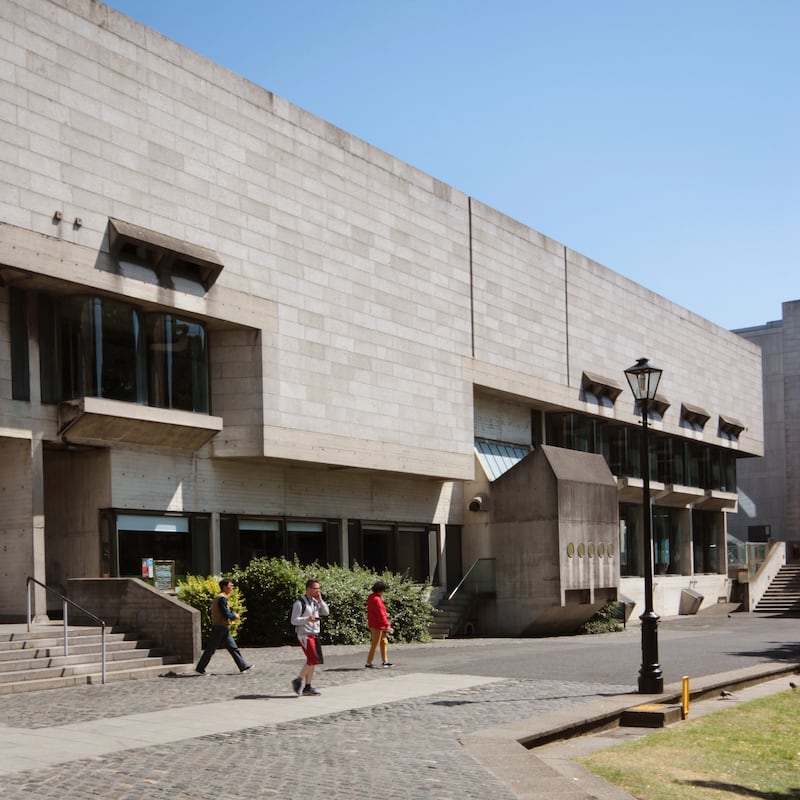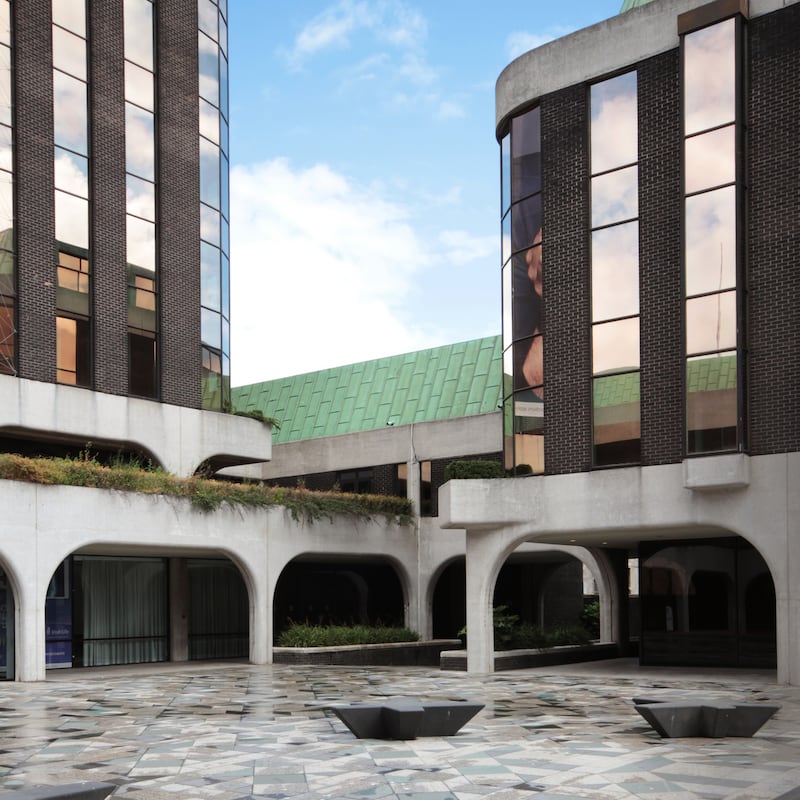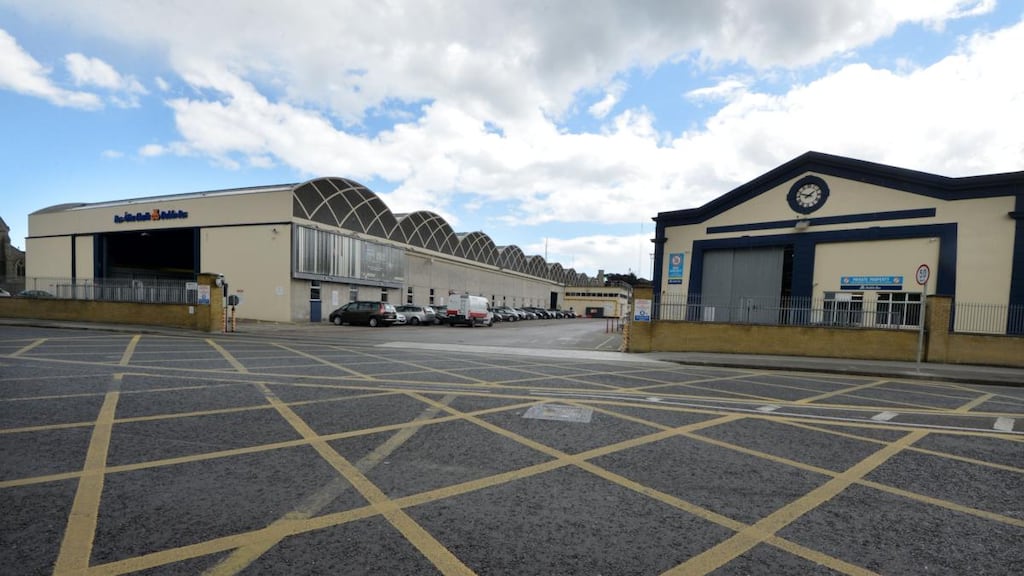If you were planning a tour of notable landmarks in Dublin city, you might visit Dublin Castle, Kilmainham Gaol or the Guinness Storehouse, but would you include a stop off at The Church Of The Ascension of the Lord in Balally? Probably not, but according to The Dublin Architecture Guide, published last month, this is just one of many modern architectural treasures dotted around our capital city.
According to co-author Paul Kelly, director of FKL Architects and lecturer at the Dublin School of Architecture, the form of this building, use of materials, and expression of light make it a great place to begin an exploration of the finest Irish architecture of the past century. “The church is a little-known work by well-known architect Liam McCormick,” explains Kelly. “In Ireland, the value of these kinds of buildings hasn’t traditionally been recognised by the public. The Dublin Architecture Guide is about highlighting their importance, because the quality of a city’s architecture affects both communities and individuals.” As British prime minister Winston Churchill said in 1943, “we shape our buildings and afterwards our buildings shape us”.
Almost every city has a guide similar to this one, and it's terrific that Dublin now finally has its own
Kelly and co-authors Cormac Murray and Brendan Spierin, both also Dublin-based architects, came together out of a shared interest in publishing and disseminating ideas, but also because of a mutual appreciation of mid-century buildings, which they felt were either underappreciated, or which were about to be demolished. Of the 255 buildings included in the guide, only 11 are protected structures, five have since been demolished, and another – DIT Kevin Street – is currently being knocked down. “We each felt that a part of the city’s heritage was being thrown away too casually,” explains Kelly. Traditionally, the focus of Irish architects and conservationists has been the preservation of Dublin’s Georgian heritage, but this particular guide signals a 21st-century review of Dublin’s cityscape and its building culture.
If the intention behind the book was to elevate the status of certain structures in the public’s eyes, you’d think the guide might have been developed as a precious coffee-table tome, with highly polished angular photographs published on high gloss paper, but no. This book was never intended to be studied or to be admired for its production values.
"It's about getting people moving and visiting buildings," Murray says. For this reason, the book has been curated geographically and constructed as a series of 12 walks around different parts of the city, from Temple Bar and the Docklands to Trinity College and West City. This means it's as easy to view several buildings as it is to visit one. For architect and Room To Improve presenter Dermot Bannon, who wrote the foreword, this is what he loves most about the guide. "It provides a map, so it's a fantastic book for the general public and offers a brilliant eye-opener to architectural gems around the city. Almost every city has a guide similar to this one, and it's terrific that Dublin now finally has its own."

Mullingar native Murray, who has written for a variety of architectural publications, wants the book to be treated as a field guide, so it’s small but robust enough to be thrown into a bag and carried everywhere.
He explains that the group worked closely with graphic designer Eamonn Hall to create a book that was as user-friendly as possible.
“We designed the cover to be weather-resistant, we chose an uncoated finish for the paper as it’s easier to draw and write on, and we were generous with margins so there’s plenty of space for people to take notes and write observations. We want readers to have a personal connection with their own copy,” he explains. So if used as intended, each guide should wind up looking as well-worn as a Leaving Cert copy of Hamlet, complete with broken spine, dog-eared pages and barely legible notes.

“Experiencing architecture first-hand can challenge an individual’s impression of it,” says Kelly, who hopes the book will help to position Irish architecture alongside that of Irish literature and art in terms of popular appreciation. For this reason, it’s as much a book for Dubliners as tourists.
It was neuroscientist David Eagleman who pointed out that, “the more familiar the world becomes, the less information your brain writes down”. Spierin (31) agrees. “We often take our own city for granted.” He offers the Berkeley Library in Trinity College as an example. “A lot of people are familiar with it, but many have never really looked at it. They view it as just a big concrete building, but it’s meticulously designed and crafted. It’s pushed boundaries,” he explains.
Kelly, Murray and Spierin visited 355 buildings in total, of which 255 made the final edit. “That’s more than featured in an equivalent guide to Lisbon, and Portugal would be considered to have a stronger architectural heritage than Ireland,” says Kelly. Spierin explains that they didn’t set out with a number or target in mind. “Our criteria was simply that each building should be visible to the public and within a 30-minute drive from Dublin city centre.”
In the past the public was deemed not to care about architecture and developers played to that
No “presentation” photographs were used in the book (images taken after construction has been completed but before a building has been occupied). Instead, each structure was photographed by the authors with a view to making a record not just of the architecture of the building but of its day-to-day experience in the Irish climate and in the context of its surroundings.
The images in the book reflect exactly what you and I would see if standing in front of each structure, complete with banners, signage, security features and stained facades. In this way, the book emphasises the importance of the lived experience of each building, but it also avoids any sense of disappointment that might be felt by a reader were they to visit a building shot exquisitely in its unstained infancy but now well broken-in by its occupants and environment.
The size of the book (it’s 430 pages), and the number of buildings which couldn’t be considered for no other reason than there was no public vantage point, is a testament to the quality of work produced here over the past several decades. As a result, the selection process required “robust” discussions between all three architects.
As former students of Kelly, Murray and Spierin brought the energy and freshness of a millennial perspective to the 57-year-old’s knowledge and experience. Spierin says there was a fantastic dynamic between the group. “Paul brought such a strong understanding of the city’s architecture and years of expertise to the project, but he always invited debate and encouraged us to challenge each other’s ideas.” Murray concurs. “There were no egos involved.”
Kelly, on the other hand, relished the energy and enthusiasm of his younger colleagues. “They were always questioning and challenging; sometimes projects which were considered revolutionary at the time, which was fascinating.”

The book also confronts traditional views on high-profile projects that weren't well received, including the now demolished ESB headquarters built in 1965, which destroyed the longest uninterrupted Georgian facade in the world. "While you might take a different view now and preserve the existing architecture, that doesn't mean the new building itself didn't have merit," explains Kelly. He adds that the most sustainable building is one that's already built.
None of the architects feel regretful about the 100 buildings left out of the book, although 29-year-old Murray says he does look at certain projects completed after the publication date and think “If only”… He cites The Printmaking Studio in Grangegorman by Scullion Architects among them. Bannon agrees that the quality of architecture being produced in Dublin right now is superb. “In the past the public was deemed not to care about architecture and developers played to that. But today, people have a better understanding of design and how great public buildings and the spaces in between them define how we live.”
The Dublin Architecture Guide demonstrates beautifully that good architecture can be found in the least obvious places: a vocational school in Inchicore, for instance, a pastoral centre in Rathfarnham or a library in Baldoyle. In fact, there are 53 educational buildings included in the guide, 13 churches and 12 community buildings. One of the most important takeaways from this book is that interesting and inspiring architecture is more often than not on our own doorsteps. Indeed, I’ll never look at Donnybrook Bus Centre in the same way again.
The Dublin Architecture Guide is published by The Lilliput Press, €25









